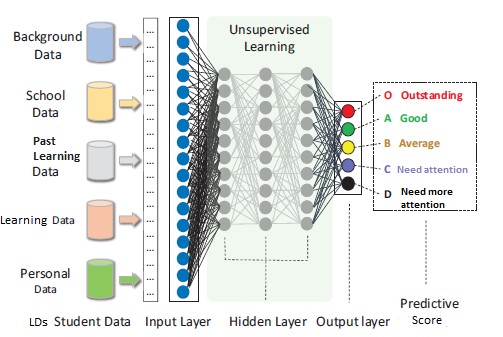An Optimization Model for Learning Disorder Children to Support Learning Development Plan
– Headed by Dr. Ely Salwana binti Mat Surin.
In reality, children as well as their parents have limited guidance in choosing an appropriate learning development plan. Although several studies are available for use in an educational setting, there is no specific optimization model that can be used for learning disorder in relation to learning development plan. Thus, the objective of this study is to assist them to plan for their learning development based on their talent and ability. In order to achieve it, the study was designed to develop an optimization model in order to determine and understand the ability of LD children and assist them to make a better learning development plan.
INTRODUCTION
The current statistic from Department of Social Welfare under Ministry of Women, Family and Community Development indicates that out of 409, 269 disable people registered with the department in March, 2018; there are 143, 334 people with learning disorder (LD), which is the largest group in disability (Department of Social Welfare, 2018). LD does not have any relation to a child’s intelligence. LD have their own unique characteristics and different learning styles. Therefore, a model of learning development plan for learning disorder children is important because it is crucial to reveal what actions should be taken based on the children ability or learning style (Cortiella & Horowitz, 2014; McIntosh, Thomas, Allen, & Edwards, 2015). However, although several studies are available, but it is more focusing on an autistic educational setting, there is lack of specific model that can be used with learning disorder data itself in relation to plan for a learning development (Miller, Maricle, & Jones, 2016; Williams, Walker, Vaughn, & Wanzek, 2017). Other than that, methods used to diagnosis LD levels of condition have long been a foremost concern in assessment related fields (McDonough, Flanagan, Sy, & Alfonso, 2017). Because of no such model; not only practitioners, but LD children as well as their parents have limited guidance in planning suitable learning development. With guidance and the right support, LD child can build a strong sense of self-confidence and a solid foundation for lifelong success. The learning development planning needs to be done in the early diagnosis and throughout the learning period, so that the ability and tendency of the children can be identified.
EXPECTED RESULTS/BENEFIT
Novel theories/New findings/Knowledge – An optimization model for learning development plan that can be used by learning disorder children, specifically to identify their ability and plan for their learning development.
SPECIFIC OR POTENTIAL APPLICATIONS
The proposed model can be used in designing a learning disorder (LD) learning development plan for different LDs profiles. It also can highly applied in development of any applications related to assist LDs children to know their potential in order to choose the right path for their learning development.

